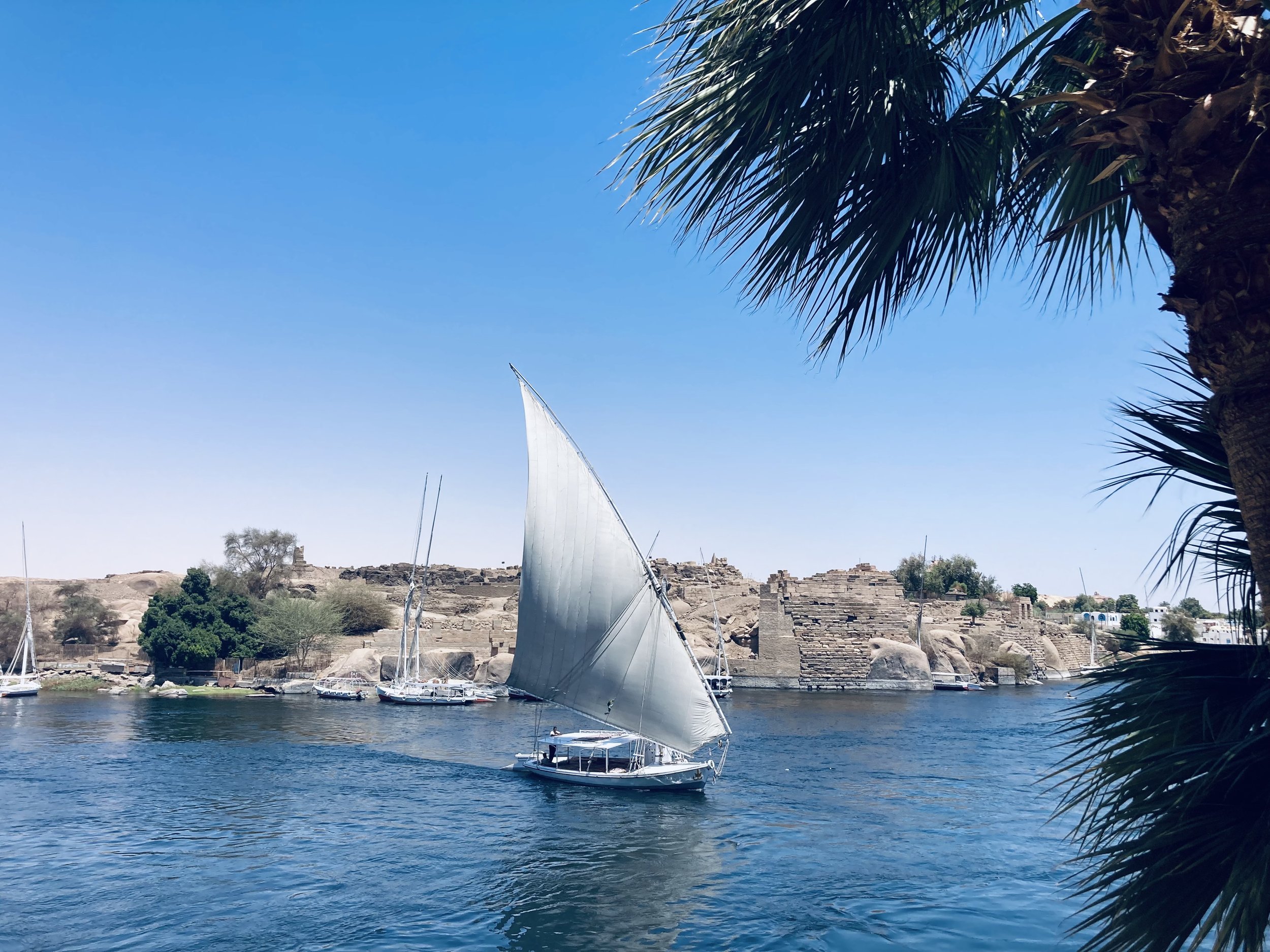Entering the gates of Aswan’s Old Cataract Hotel, it was as though time itself had frozen still. The corridors exuded an air of faded grandeur, with framed pictures of Egyptian dignitaries alongside notable figures such as Winston Churchill and Howard Carter, the British archaeologist who famously discovered the tomb of Tutankhamun. Whispers of a bygone era echoed through the marble halls. It is said that Agatha Christie herself stayed here in the 1930’s while writing her 1937 novel "Death on the Nile.” Nevertheless, the hotel's prominence in Christie's famed novel lends an undeniable allure to its storied history.
Standing proudly on the banks of the Nile since 1899, the historic British colonial-era hotel was built by Thomas Cook, founder of the pioneering travel agency. The tranquil strains of classical music greeted me as I stepped onto its terrace, offering a breathtaking vista of the Nile, where feluccas glided gracefully, their billowing sails painted against the canvas of the sky.
Seated amidst the timeless elegance of the terrace, I couldn't help but feel transported to a different era. The distant silhouette of Elephantine Island stood sentinel in the river, a silent witness to the passage of time. It was easy to imagine oneself as a character in one of Christie's mysteries, ensconced in a world of intrigue and suspense.
As I sipped my tea, I found myself contemplating the secrets that lay hidden within the hotel's walls. For if Agatha Christie had once walked these hallowed halls, surely she had left behind more than just the memory of her presence. With a bittersweet farewell to the captivating ambiance of the Old Cataract Hotel, I embarked on the next leg of my journey, tracing the course of Egypt's ancient river.
